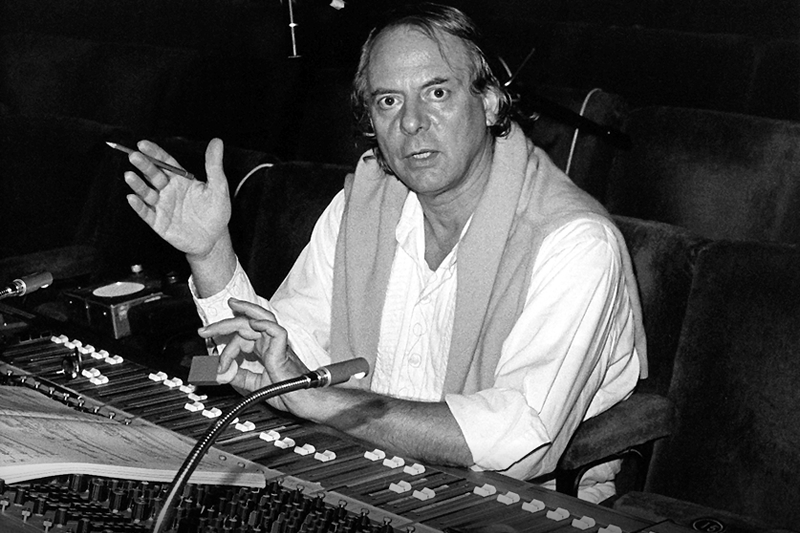
Supplement for INORI – Small Instrumentation
Stockhausen Complete Edition on CD
Since 1991, a complete edition of all recordings in which Karlheinz Stockhausen has personally participated is being released on compact discs. Each CD in this series is identified by Stockhausen's signature followed by an encircled number. The numbers indicate the general historical order of the works.
Stockhausen realised the electronic music and participated in these recordings as conductor, performer, sound projectionist, and musical director. He personally mixed down the recordings, mastered them for CDs, wrote the texts and drew the covers.
- The compact discs may be obtained from the Stockhausen-Verlag: Kettenberg 15, 51515 Kuerten, Germany (www.stockhausenCDs.com).
Karlheinz Stockhausen
Supplement for INORI – Small Instrumentation
INORI Small Instrumentation
INORI can also be performed by a small orchestra consisting of 33 musicians, if the instruments
are amplified by microphones.
The same score is used for the Small Instrumentation as for the large one. The number of instruments
and the indications in [ ] apply to the Small Instrumentation (see Vln. I, II in the score). The performance parts are different, however, and the conductor must study them.
The following list of instruments shows how each instrument of the Small Instrumentation corresponds to an instrument in the Large Instrumentation.
The Instructions about the Instruments in the chapter Large Instrumentation also apply to the Small Instrumentation.
| Instruments | correspond in the Large Instrumentation to: |
|
| 2 flutes | 1st (also piccolo) 2nd (also alto flute) |
1st Fl. 3rd Fl. |
| 2 oboes | 1st 2nd |
1st Ob. 3rd Ob. |
| 2 clarinets | 1st 2nd (also E-flat clar. – new part) |
1st Cl. 3rd Cl. |
| 2 bassoons | 1st 2nd (also contrabassoon) |
1st Bsn. 4th Bsn. |
| 2 trumpets | 1st 2nd |
1st Tp. 3rd Tp. |
| 2 horns I | 1st 2nd |
1st Hn. I 3rd Hn. I |
| 2 horns II | 1st 2nd |
1st Hn. II 4th Hn. II |
| 2 trombones | 1st (with F-attachment) 2nd (also bass trombone) |
1st Trb. 3rd Trb. |
| 1 tuba | Tuba | |
| 3 violins I: | I/1st (new part) I/ 2nd (new part) 1/3rd (new part) |
1st + 2nd Vln. I 5th + 6th Vln. I 13th + 14th Vln. I |
| 2 violins II: | II/1st (new part) II/2nd (new part) |
1st + 2nd Vln. II 7th + 8th Vln. II |
| 2 violas: | 1st 2nd |
1st Vla. 7th Vla. |
| 2 violoncelli: | 1st 2nd |
1st Vc. 7th Vc. |
| 2 double basses | 1st 2nd |
1st Db. 5th Db. |
| 1 piano 4 percussionists 1st 2nd 3rd 4th |
||
| _____________ 33 musicians |
The distribution of the violins is subject to exceptions (see [ ] in the score).
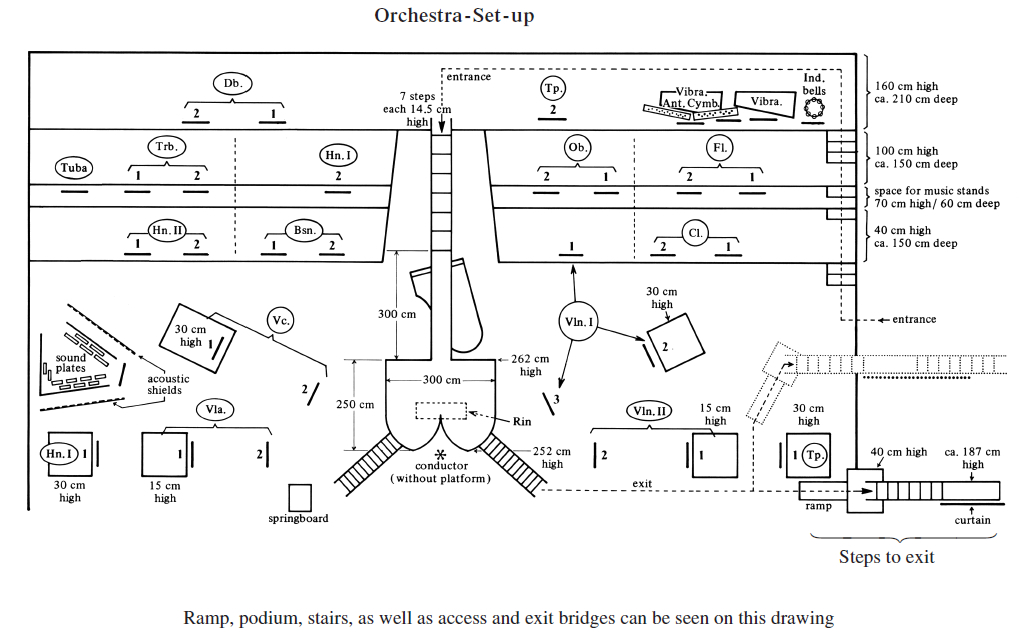
The soloists' podium with stairs, access bridge, exit stairs and bridge and the springboard may be loaned from the publisher.
Important reminders about props and instruments for INORI
As the soloists' podium owned by the Stockhausen-Verlag is too low, the following boxes are included:
1) 170 cm (long) x 50 cm (wide) x 60 cm (high) — under the access bridge
2) 350 cm (long) x 50 cm (wide) x SO cm (high) — at the rear
3) 350 cm (long) x 50 cm (wide) x 40 cm (high) — at the front
4/5) two boxes, each 70 cm (long) x 50 cm (wide) and 40 cm (high),
each with a step (that is attached by screws)
measuring 70 cm (long) x 25 cm (wide) x 20 cm (high)
The boxes must be very sturdy so that they can support the entire soloist podium including 2 people! (See photos on pages XXI and XXVII of the INORI score).
All boxes should be painted just like the soloists' podium in light blue-grey.
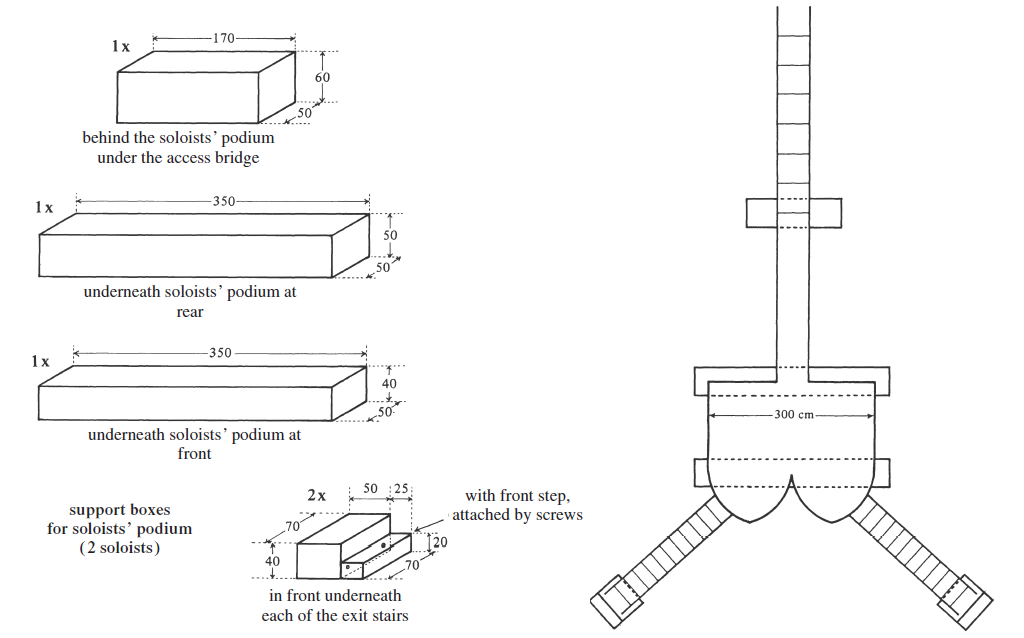
The organizer must supply the following:
I. 3 separate podia for Hn. I /1, Vl. I/2, Tp. 1: each measuring 120 x 100 cm,
30 cm high;
1 podium for Vc. 1: 150 x 100 cm, 30 cm high;
2 podia for Va. 1, Vl. II/1: each 120 x 100 cm, 15 cm high.
II. 2 acoustic shields (Plexiglas is optimal),
each ca. 200 cm long and ca. 180 cm high. They are also
drawn in the score (see Orchestra Set-up)
next to the sound plates.
Without these shields, Cello 1, Horn 1
and Viola 1 cannot play.
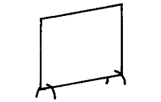
Important notes:
III. Which tuba with Sousaphone bell do you have?
Please do not use a C-tuba ("Kaiserbaß" = "imperial bass")
IV. Can your 2nd trombonist change between tenor trombone with F-attachment
and bass trombone? That is what is required. It is not good to play the high
pitches (e.g. constant high G) on the bass trombone. The player must change!
V. Do the double basses have 5 strings, as required?
VI. Are the exact mute sizes for the larger-sized trombone available (e.g. the
straight mute and the cup mute for the 2nd trombonist's bass trombone)?
VII. Remind percussionist 1 (sound plates), that he or she must wear wool gloves
for muting, because otherwise the muting causes undesired noises.
The sound plates, two chromatic sets of antique cymbals, the chromatic rin
and, if necessary, the Indian bells, may be loaned from the publisher.
VIII. Please remember that each trumpeter and each trombonist requires a table
for mutes.
Each one has 3 mutes: straight-, cup-, and wawa-mutes, and the trombonists
also have a plunger for the places where they are not able to close the
wawa-mute with their hand.
The best solution is a felt-covered wooden table with 3 holes, into which the
mutes exactly fit, and for the trombones with extra room for the plunger.
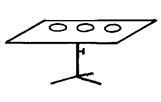
IX. 2 vibraphones are required, one of which is equipped with a vibrato motor
with variable speeds: senza vibrato = motor off – slow vibrato (see bar 58) –
fast vibrato (see bar 66) – slower vibrato (see bar 641), etc.
INORI Small Instrumentation: 2nd trombone (= 3rd trombone's part in the Large Instrumentation)
The 2nd trombonist should change between tenor trombone with F-attachment and bass trombone. This part should not be played only on the bass trombone, as occasionally in the past, because the passages with high G often rapidly repeated) then sound too clumsy and loud.
Schedule for changing mutes:
| Beginning | bass trombone, |
| bar 196 | tenor trb., |
| bar 450 | bass trb. for bar 454, |
| bar 465 | tenor trb., |
| bar 528 | (for bar 537) bass tromb., Cup mute bar 647 to 675, |
| bar 801 | tenor trombone, especially for bar 817, |
| bar 820 | bass trombone. |
For all brass instruments beginning in bar 212: means attack,
means attack,
e.g. also trb. 1-2 in bar 260 = attack at the staccato dot.
= attack at the staccato dot.
Trombone Mutes
| b. 490 | b. 520 | b. 624 | b. 641 | b. 675 | b. 932 | b. 945 | |
| 1. | Wawa | senza | Wawa | Cup | senza |
straight |
senza |
|---|---|---|---|---|---|---|---|
| 2. | Cup |
Horns I |
con | Beginning | b. 185 for 191 |
b. 407 | b. 471 stopped |
|||
|---|---|---|---|---|---|---|---|---|
| senza | b. 134 for 145 |
b. 268 | b. 455 |
(cont.)
Horns I |
con | b. 640 sord. |
b. 933 / 935 stopped |
|||
|---|---|---|---|---|---|---|
| senza | b. 596 | b. 656 | b. 948 |
Horns II |
con | Beginning 1. 2. |
b. 471 1. 2. 3. stopped |
b. 480 4. stopped |
||||
|---|---|---|---|---|---|---|---|---|
| senza | 3. 4. | b. 134 | b. 487 4. open |
b. 490 3. open |
b. 509 1. 2. open |
(cont.)
Horns II |
con | T. 528 1. stopped |
b. 558 2. 3. 4. stopped |
b. 614 1.–4. con sord. |
b. 640 1. 2. con sord. |
|||
|---|---|---|---|---|---|---|---|---|
| senza | b. 561 2. 3. 4. open |
b. 566 1. open (S. Instr. b. 563) |
b. 617 1.–4. |
(cont.)
Horns II |
con | b. 644 3. 4. con sord. |
b. 925 + 926 (1.) |
b. 933 / 935 1.–4. stopped |
|||
|---|---|---|---|---|---|---|---|
| senza | b. 650 3. 4. senza |
b. 656 1. 2. senza |
b. 947 1.–4. open |
 always sound a fifth lower,
always sound a fifth lower,Lighting for the Orchestra
Just enough light should come from directly above the orchestra so that the musicians can clearly read their music and the conductor can clearly see all the musicians. For this reason, the lamps which shine from above the orchestra should be controlled by dimmers.
The conductor stands at the front, just in front of the Prayer podium. A lamp, which is attached to the middle front support of the Prayer podium, shines straight downwards onto the score (approx. 150 watt bulb with, for example, a silver metal shade). Besides this, a spotlight should illuminate the conductor from above so that the musicians can clearly see him.
The rin player is seated beneath the Prayer podium at a table, with his instruments and a music stand in front of him. He also needs a shaded lamp that shines down on him from the middle front support of the Prayer podium.
The pianist also sits under the Prayer podium. His music and keyboard should be illuminated from above by a lamp that is fixed to the underside of the podium's entrance bridge.
The springboard should be lit during the entire performance by a circle of light (approx. 1.30 m ø) coming from the upper left front (as seen by the audience).
The exit stairway should be lit only at the end (from backstage), when the soloists arrive there (e.g. from a high stand behind the curtain, invisible to the audience). It should give the impression that the soloists ascend into the shining sun.
Lighting for 2 Soloists
12 spotlights are required. Each soloist requires 2 spotlights from below at the left and right, 2 from both sides, and 1 directly above. Then 1 spotlight is required for the springboard, and 1 for the exit stairs.
In addition, 2 follower spotlights are necessary, one for each soloist, preferably from the rear of the hall. When the soloist on the left descends to the springboard and ascends again, only the left follower spotlight is used. This spotlight should also encircle both soloists when they turn around together to face the public and shout HU. It is faded out at the following orchestra entry.
When the soloists come in at the beginning, and starting at bar 894, both follower spots are used.
At the end, both follower spots are to remain fixed on the place where the soloists disappeared, and follow them each time they return for bows and then exit. Even after the applause has ended, the spots are to remained fixed on the soloists’ exit, until the audience has left the hall.
The entire lighting (except for the follower spotlights) should already be on when the audience enters the hall. The beginning of the performance is marked by darkening the hall lighting and fading in the follower spotlights for the entrance of the soloists.
The hall lighting is raised only after the final applause, and the stage lighting should remain unchanged until the hall is empty.
Lighting
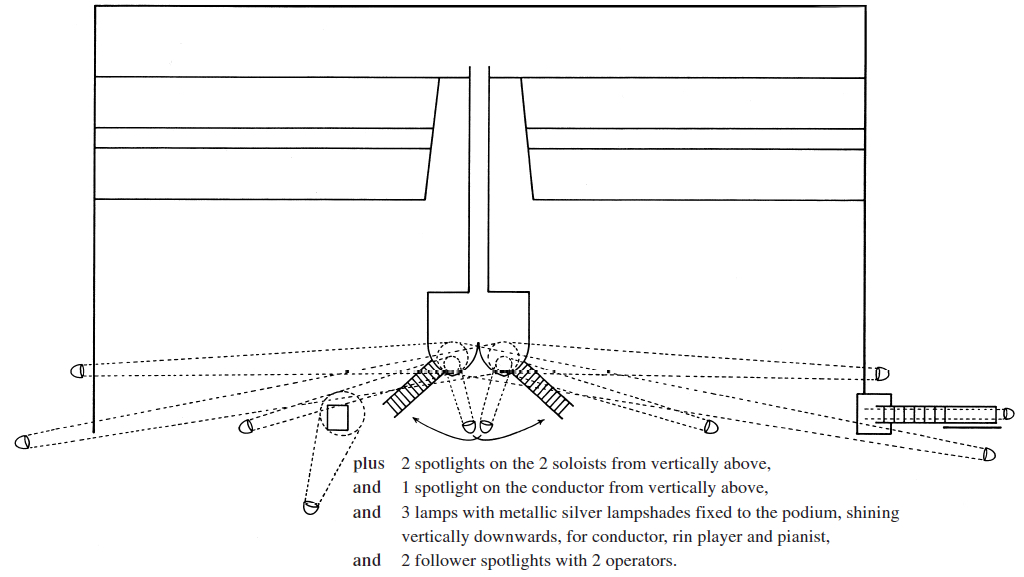
Tuning – Entrance – Dress
The concert master should take his tuning from the piano and then tune the entire orchestra in the musicians’ dressing rooms. Only the double basses come onto the stage early, tune their instruments to the piano, and then go out again.
Each half of the orchestra enters from its side of the stage without speaking. After they have sat quietly for a moment – without playing a note – the soloists and the conductor enter from the same door at the right (as seen from the audience).
The conductor walks at a normal pace to his music stand, the orchestra remains seated.
The soloists walk slowly along the path indicated in the set-up diagram and up the rear stairs of the Prayer podium (at a distance of 4 or 5 steps apart) and kneel at the front edge of the podium. The conductor looks up to them, the soloists place their hands over their eyes, and the conductor begins.
The dress of the orchestra should be uniform and simple.
Prayer Podium for 2 Soloists (can be loaned from the publisher)
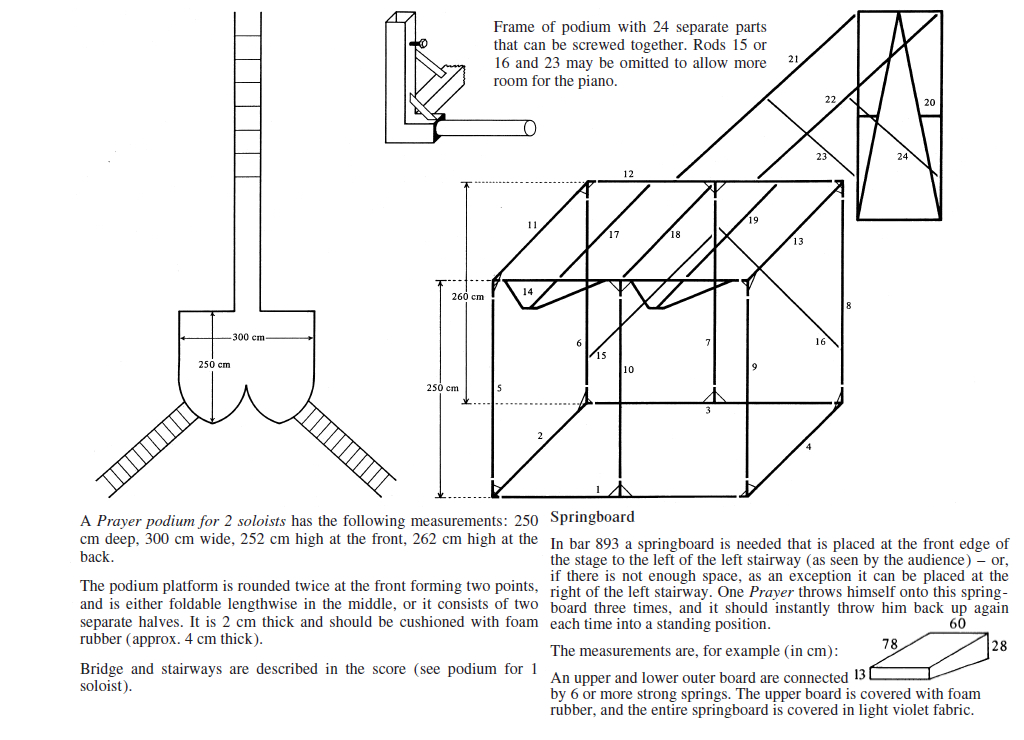
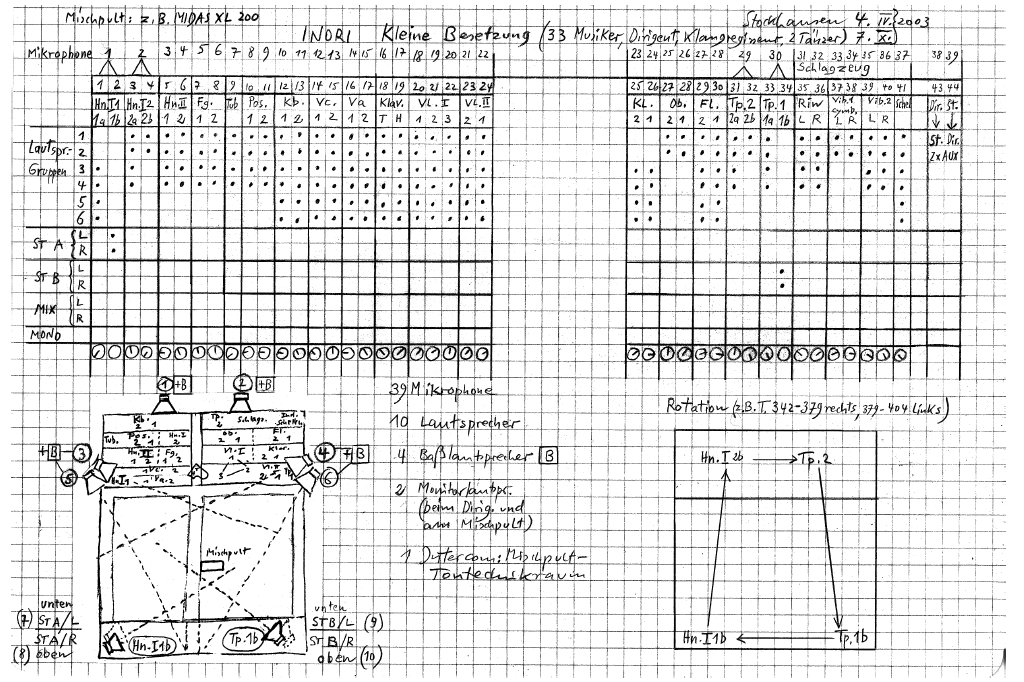
In the adjacent drawing, each instrument is given its own individual, directional microphone.
The 2 microphones of the two horns I 1-2 are connected to 2 faders each on the mixing console using Y-adapters: Hn. I 1a-1b and Hn. I 2a-2b (faders 1–4).
The 2 microphones of the two trumpets 1-2 are also connected to 2 faders each on the mixing console using Y-adapters: Tp. 2a-2b and Tp. 1a-1b (faders 31–34).
This distribution is used for the sound rotations of the trumpets and horns in the hall, which are indicated in bars 342–404 and bars 849–872 (trumpets end the rotation already in bar 862) of the score.
It is best to control the faders mentioned with VCA-(group) faders:
VCA 1 Hn. I 1a (speaker 3(4) + 5(6) pan. ) and
) and
Hn. I 2a (speaker 1 + 2 + 3 + 4, pan. )‚
)‚
VCA 2 Hn. I 1b (speaker 7 + 8, pan. ) and Hn. 1 2b (speaker 1 (+2), pan.
) and Hn. 1 2b (speaker 1 (+2), pan. ),
),
VCA 3 Tp. 2a (speaker 1 + 2 + 3 + 4, pan. ) and
) and
Tp. 1a (speaker (1) + 2 + (3) + 4, pan. ),
),
VCA 4 Tp. 2b (speaker (1) + 2, pan. ) and Tp. 1b (speaker 9 + 10, pan.
) and Tp. 1b (speaker 9 + 10, pan. ).
).
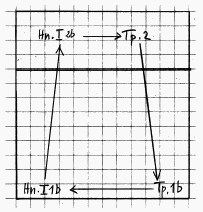 |
Normally, VCA 1 and VCA 3 are open, during the rotations VCA 2 and VCA 4 are open and VCA 1 and VCA 3 are closed. Thus, the rotations move around the square of the loudspeakers: e.g. bars 342–404: |
In bar 379 the rotation changes from clockwise to counter-clockwise.
The rotations can be controlled so that they are parallel.
Loudspeakers 7 + 8 are located at the lower and upper rear left on high stands (or balcony), loudspeakers 9 + 10 at the lower and upper right rear. The lower and upper positions can be controlled separately for balance.
The stage loudspeakers should be mounted on high stands or hung (at least 4.5 m) (see drawing of mixing console).
The amplified orchestra sound should be heard as coming from the direction of the orchestra and mixed with the original sound. That is why loudspeakers 3 +5 / 4+ 6 may not be located in front of the orchestra.
With the help of the panorama controls, the sounds of the instruments can come from their positions on stage.
Since the volume of the flutes, 5 violins and 2 violas must be specially controlled at several places in the score, the following is are recommended:
VCA 6 flutes, VCA 7 violins and violas, VCA 8 tutti.